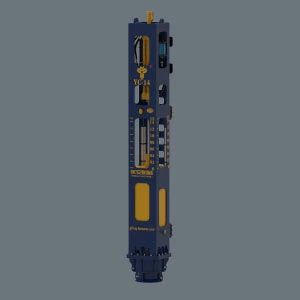Vibration Pile Sinking Process Of Hydraulic Impact Pile Hammer
This method is primarily suitable for U-shaped steel sheet piles, I-shaped steel sheet piles, Larsen piles, steel pipe piles, and precast concrete piles under 12 meters in length. This pile driving method works well in sandy soils but is less effective in clay soils. In such cases, the hydraulic impact hammer-watt model is used when necessary.
The hydraulic impact hammer pile driver vibration pile driving process involves: hoisting the pile, inspecting its flatness, and then lowering the hammer, allowing the excavator impact hammer to slowly sink into the soil. (If necessary, a pile cap must be installed.) Check the pile position and centerline, and then drive the pile to the designed depth. Move the hydraulic hammer pile driver to the next pile and continue the process.
Clay Layers: In clay layers, vibration disrupts the original soil structure, reduces the density variation of the sand, and weakens the cohesive force. This increases sensitivity, increasing frictional resistance around the pile, necessitating the use of a two-stage acceleration system or the larger hydraulic impact pile hammer model.
Sand Layers: Vibration in sandy soils disrupts the bonds between sand particles, causing aeration, which reduces frictional resistance between the sand and the pile, facilitating pile driving. However, for high-density sand layers and loose-structured sand layers, the actual effect of vibration will be weakened due to soil characteristics. In this case, different vibration methods should be used.
